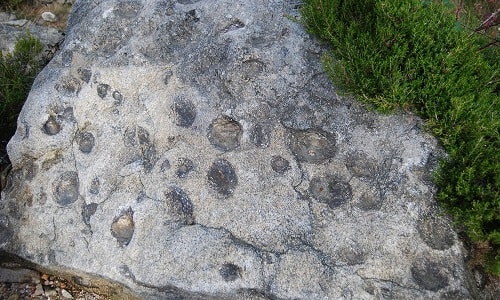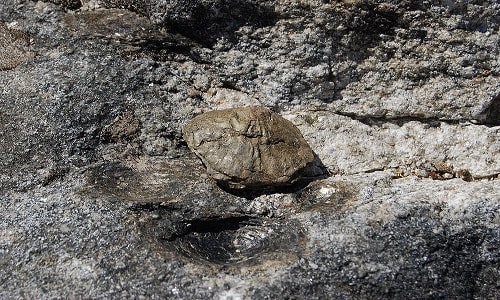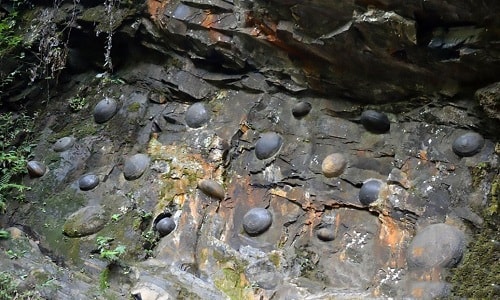The rock that "gave birth" in the Portuguese mountains
A giant granite rock on a mountain range in northern Portugal has intrigued many people because it has been continuously producing "baby rocks" for hundreds of years.
|
A "baby-giving" rock in Portugal periodically ejects countless baby rocks. Photo:Flickr. |
A massive granite rock in Portugal's Freita Mountains, near the village of Castanheira, periodically ejects pebble-sized rocks, according to Amusing Planet. Locals call this rare geological phenomenon Pedras Parideiras, which means "birthing rocks."
The mother rock is a giant granite outcrop, 1,000 meters long and 600 meters wide. The surface of the rock is covered with small, convex disc-like nodules measuring 2-12 cm in diameter. Due to the impact of hot weather or erosion, these small nodules have separated from the mother rock, leaving many black marks on the rock surface.
|
A small protrusion on the surface of the rock "giving birth". Photo:Wikimedia. |
The nodules or “baby rocks” have the same mineral composition as the parent rock, but the outer layer contains biotite, a mica with very low mechanical resistance. Rainwater or dew seeps into the cracks in the mica surface. When winter comes, the water freezes. The ice acts as a wedge, deepening the crack until the nodule falls out of the parent rock after hundreds of years.
The granite boulder is now located in the Arouca Geopark and is a World Heritage Site recognized by the United Nations Educational, Scientific and Cultural Organization. Officials have stipulated that visitors are not allowed to remove the small stones from the area.
|
Round stone eggs on the San Dan Nhai cliff. Photo:Amusing Planet. |
Similarly, a cliff named Chan Dan Ya (San Dan Ya), which means “egg-laying cliff” in Chinese, also ejects smooth, round stone eggs. They protrude from the cliff and then fall to the ground, much to the amazement of locals in the Qiannan Autonomous Prefecture of southwest China’s Guizhou Province.
These stone eggs are much larger and heavier than the Portuguese “baby stones”, measuring 30-60 cm in diameter and weighing up to 300 kg. Currently, about 70 stone eggs are still attached to the cliff face, and could fall off at any time in the next few decades.




